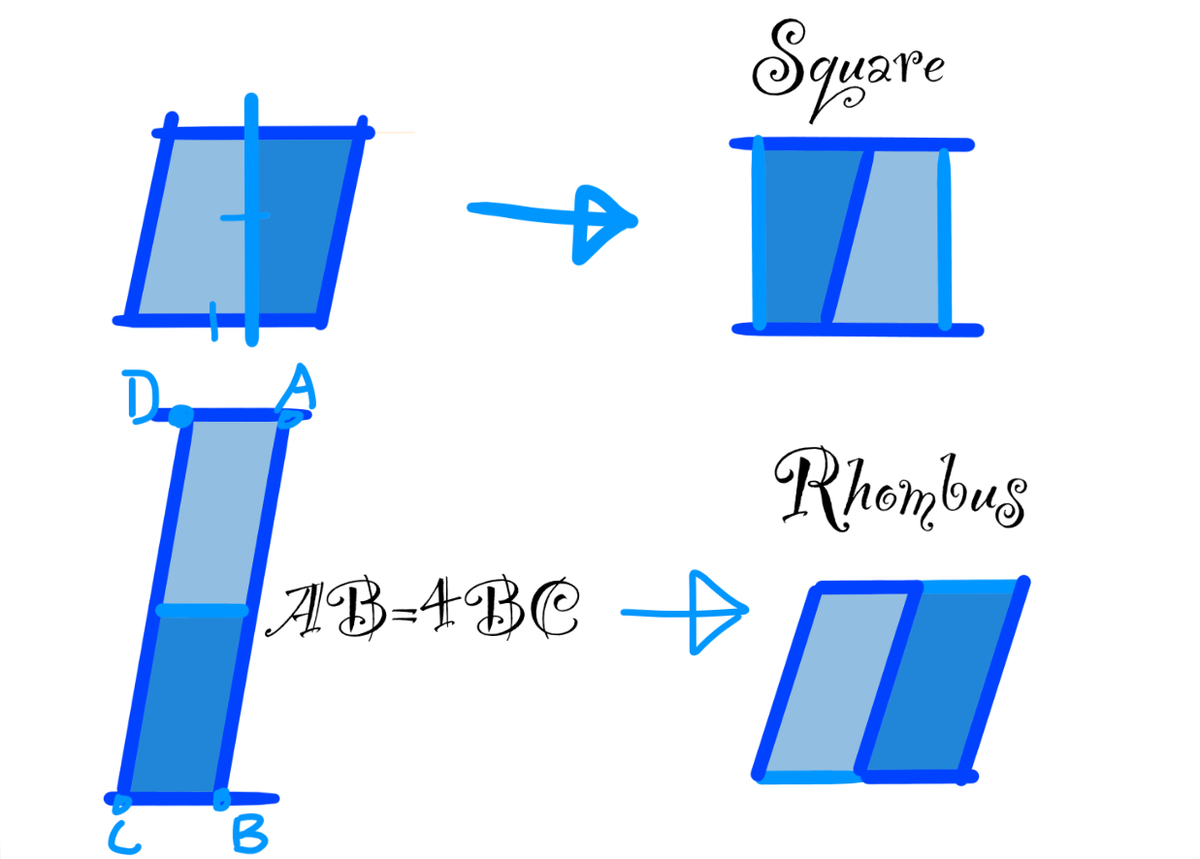Please help me ASAP: Tricky geometry 😅
I’ve come across a geometry problem which I think doesn’t have an answer. Am I wrong?
Here’s the problem:
Which of the following shapes cannot be obtained by cutting a parallelogram into two congruent pieces and rearranging into one?
A. Square (eliminated:base=height)
B. Rectangle (eliminated)
C. Rhombus (Xtra tricky but still eliminated:side AB=4side BC)
D. Parallelogram (eliminated)

No vote yet
1 vote
Easy Math Editor
This discussion board is a place to discuss our Daily Challenges and the math and science related to those challenges. Explanations are more than just a solution — they should explain the steps and thinking strategies that you used to obtain the solution. Comments should further the discussion of math and science.
When posting on Brilliant:
*italics*or_italics_**bold**or__bold__paragraph 1
paragraph 2
[example link](https://brilliant.org)> This is a quote# I indented these lines # 4 spaces, and now they show # up as a code block. print "hello world"\(...\)or\[...\]to ensure proper formatting.2 \times 32^{34}a_{i-1}\frac{2}{3}\sqrt{2}\sum_{i=1}^3\sin \theta\boxed{123}Comments
Your solution definitely seems viable, maybe they meant that one shape can't be formed from any arbitrary parallelogram? In your examples you relied on certain proportions in the shape, so it might be the case that a construction doesn't exist for all parallelograms to turn into one of those shapes.
I think you can still eliminate rectangle and parallelogram though, because there can only be one answer and if either B or D were impossible, A or C would have to be as well.
Log in to reply
Thanks for your reply😊